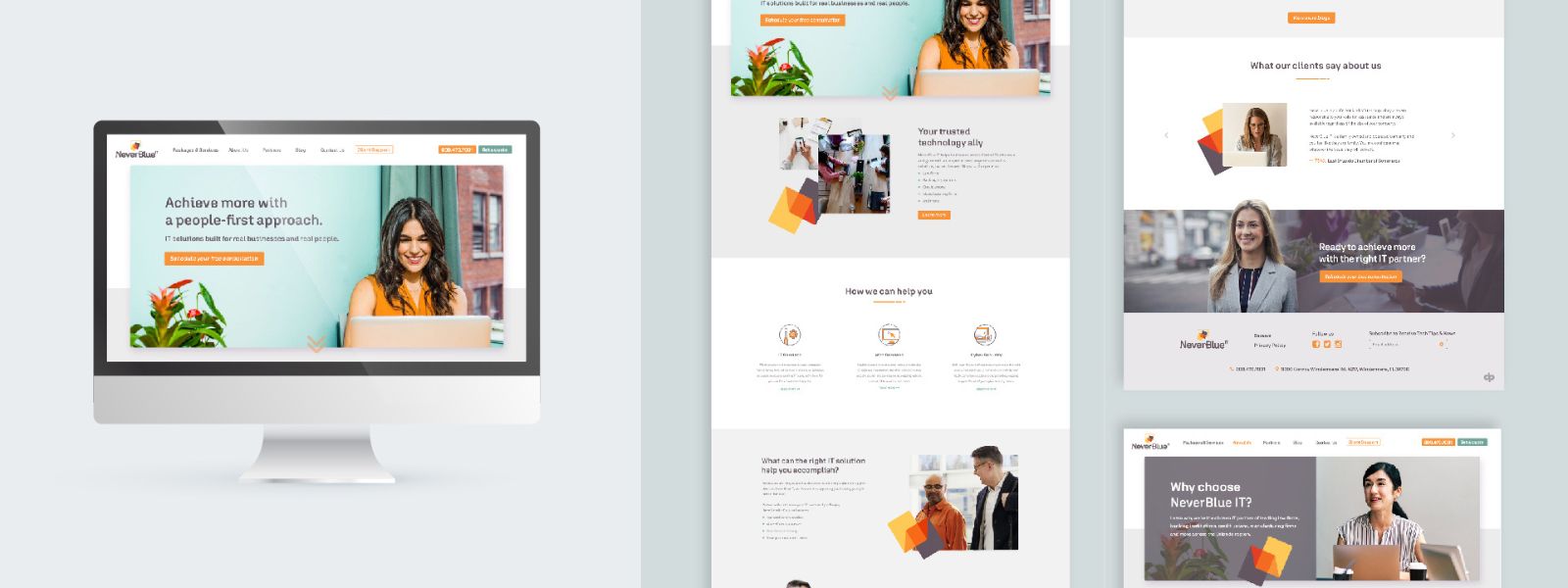How to create a B2B website that helps your business grow
Explore the six essential elements that make up a quality B2B website for your organization
Every business owner wants their business to succeed and not miss out on any potential clients to competitors because of their website. This is a valid concern as almost 90% of Internet users switch to a competitor’s website after having a bad site experience. [1]
As a business-to-business (B2B) organization, your website is one of the first things that B2B buyers will turn to when they discover your business, so it’s critical that you make a great first impression. Continue reading to learn about some of the most important elements of a good B2B website.
Element #1: Write short paragraphs with meaningful subheadings
When a visitor comes to your website, they want to find the information they’re looking for as quickly as possible.
If they come to a website that has dense and lengthy paragraphs, they’re not going to read the page. Visitors are much more likely to read short paragraphs that have clear subheadings. A general rule to follow is to not make paragraphs longer than three lines, but ensure that you are breaking paragraphs where it makes sense for readers.
Subheadings also help to effectively break up your website’s content. They inform the readers about what is in each section, so that they are only reading information they will find valuable. It’s important to ensure that your subheadings are meaningful and clear. If your subheadings are vague, readers are less likely to know what the corresponding section is about and skip reading it.
Element #2: Include supporting visuals
Your website’s visuals, such as charts, images, and graphics are where you can stand out from your competition. Readers find visuals much more engaging and memorable than a web page filled with text.
Visuals encourage visitors to stay, read, and engage with your content. Be sure that your visuals align with your business’s branding to create one cohesive narrative.
It’s important to note that your business’s website should feature real images of your team and clients rather than stock images whenever possible.
Element #3: Optimize for mobile
It is not only important that you have a fully functional website for desktop users, but for mobile users as well. 50% of B2B search queries are made on a mobile device. [2]
If your business’s mobile website is not optimized and doesn’t contain the same content as your desktop site, you are likely missing out on a great number of website visitors that could turn into customers or clients.
Element #4: Feature testimonials
Testimonials are a powerful way that your business can show potential clients that you are trustworthy and reputable. 92% of B2B buyers are more likely to purchase a product or service from a business they’ve read a trusted review about. [3]
Testimonials in strategic sections of your B2B website show others that someone has entrusted your business to provide a service and that you delivered that service in a way that met or exceeded their standards. For additional credibility, include your client’s logos or headshots along with their testimonial.
Element #5: Create a format that’s easy to follow
B2B customers primarily seek information that is helpful to them. [4] That’s why it’s critical that your website follows an easy-to-follow flow that allows potential clients and customers to find information as easily as possible.
When you are designing or redesigning your business’s website, be sure to pay close attention to your webpage’s visual hierarchy. Each web page should present visitors with one message at a time in a way that makes sense to them.
There should never be multiple pieces of content competing for visitor’s attention as they scroll. It should always remain clear which piece of information is the center of attention.
Element #6: Include a clear call-to-action (CTA)
One common mistake that many businesses make on their websites is ending their pages without a clear CTA.
The CTA you decide to use depends on what you would like your visitor to do, whether that’s to get a quote, sign up for a newsletter, or download a resource, it’s important to be clear on what action they should take next.
Looking for a B2B website design company?
With nearly 20 years of experience, the Different Perspective web design team is ready to design and develop a custom website for your B2B organization that helps increase your visibility, convert leads into customers, and properly represent your business online.
Through our website design services, your business can expect the optimization of your new website for search engines from design to development and content through the implementation of the live site.
Ready to get started?
Contact us today!
Sources:
1: UserGuiding | 37 Website Statistics and Trends in 2022: Website Design, Traffic, and Experience.
2: Smart Insights | B2B mobile buyer behaviour research
3: Learn Hub | Consumer Reviews – 2018 B2B Sales & Marketing Report
4: Gartner | B2B vs. B2C Personalization: The Parallels and Critical Differences



 Back to all blogs
Back to all blogs